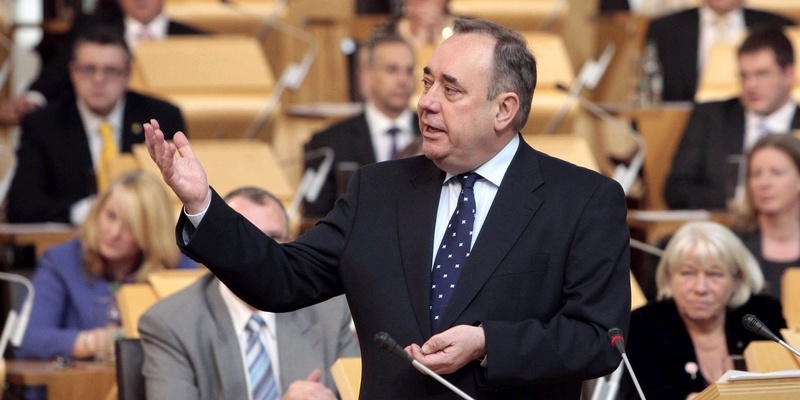First Minister Alex Salmond has warned David Cameron from “imperially” meddling in the forthcoming independence referendum.
The stark message to the prime minister came as Mr Salmond gave a strong indication that Scots will be asked two separate questions in the historic ballot expected in 2015.
The first minister hinted that the public would also be given the option of voting for fiscal autonomy short of full independence.
The revelations came as it emerged that Mr Cameron will set up a cabinet committee to combat independence.
The prime minister has decided to take charge of the issue amid concerns the Nationalists have increasing support, with a poll on Thursday showing that 37% of the public now back independence.
Sources have even suggested that Mr Cameron could organise the referendum from Westminster if he did not like the SNP’s plans.
But he has overruled Scottish secretary Michael Moore’s insistence that there would have to be two referendums before Scotland could break away from the United Kingdom.
Quizzed on the issue at a press conference, Mr Salmond made clear his belief the referendum had to be organised from Edinburgh.
He said, “The idea of a Westminster imperial seizing on the questions of the referendum is about as likely as two referendums.”
Turning to the establishment of the cabinet committee, he added, “I would expect the people who would want to argue against independence to argue against it.
“I will be arguing in favour. We will only be putting forward a proper question why would we do anything else?”
He added that, as independence was the SNP’s “major objective,” they have spent time on how the referendum would work.
Mr Salmond said, “We are going to do it in the timescale I indicated during the election campaign and for which we received an overwhelming mandate.
“But we have no interest in doing anything other than making it a clear question so people can vote yes or no.
“The question as to whether there could be a second proposition I’ve left open because I do know there is a substantial group of opinion in Scottish society that say that could be an option.”
Mr Salmond earlier met Deputy Prime Minister Nick Clegg to discuss extra powers for Holyrood.
He lobbied for additions to the Scotland Bill going through Westminster, including devolving corporation tax and the Crown Estate, further borrowing powers, a greater share of excise duty, a role at Europe’s Council of Ministers and limited control of broadcasting.
On the issue of the referendum, Mr Clegg said, “I have to say to you, at the end of the day, many people across Scotland will be lost in quite a lot of the legal and constitutional detail.
“What they want to know is not so much the vehicle for this or that decision, but what is the choice.”
(Photo by Andrew Cowan/Scottish Parliament)
